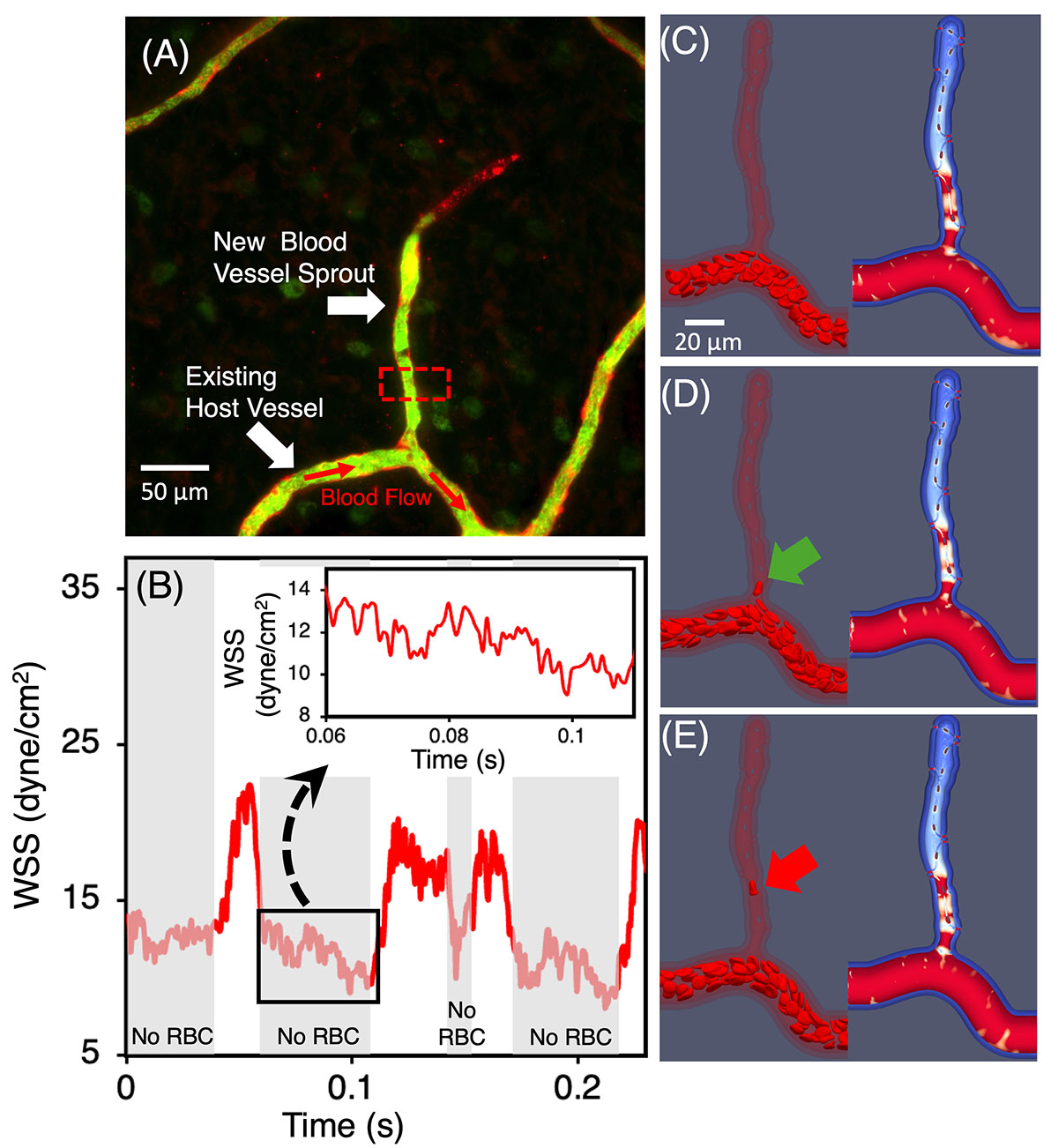News
SDSC’s Expanse Simulations Unlock Secrets of Blood Vessel Growth
Published July 07, 2025
By Jack Imel and Kimberly Mann Bruch

Researchers at the New Jersey Institute of Technology (NJIT) and the University of Florida have made a groundbreaking discovery about how blood flows through the tiniest new blood vessels in our bodies, findings that could revolutionize our understanding of everything from wound healing to cancer treatment. Using powerful supercomputer simulations, they've revealed that individual red blood cells create dramatic, ever-changing forces as they flow past newly sprouting blood vessels – a discovery made using U.S. National Science Foundation (NSF) ACCESS allocations on the Expanse system at the San Diego Supercomputer Center (SDSC)—part of the School of Computing, Information and Data Sciences (SCIDS) at UC San Diego.
“When blood flows through your vessels, it creates a force against the vessel walls—like water rushing through a garden hose pushing against the hose's inner surface," explained Peter Balogh, the study’s senior author and assistant professor of mechanical and industrial engineering at NJIT. "This is known as wall shear stress.”
But here's what surprised the research team: this force in the newly sprouted vessel isn't steady. Instead, it fluctuates dramatically each time a single red blood cell flows past the entrance. Balogh compared it to cars driving past a highway on-ramp—each car creates its own unique wind pattern and pressure at the entrance. Similarly, each red blood cell generates its own distinct pattern of force against the blood vessel wall.
“In this case, we were watching what happens near tiny new blood vessels that are just starting to grow (called sprouts) and we discovered that this pushing force against the vessel wall kept changing dramatically each time a single red blood cell flowed past the opening of these new vessel sprouts,” Balogh said. “We also observed that under certain circumstances a red blood cell could enter a sprout, dramatically changing the force patterns even further.”
New blood vessels sprout from existing ones almost constantly throughout our lives through a process called sprouting angiogenesis. This biological phenomenon plays a crucial role during normal physiological processes and disease states. That is, sprouting angiogenesis is involved in normal development from the embryo to puberty, adaptation to exercise or healing from an injury, and in menstruation and pregnancy. On the other side of the spectrum, sprouting angiogenesis is implicated in a wide range of pathologies including cancer, chronic wounds, diabetic retinopathy, macular degeneration, atherosclerosis, psoriasis, rheumatoid arthritis, inflammatory bowel disease and endometriosis.
Understanding how blood flow influences this sprouting process has been a longstanding challenge for researchers and previous studies relied largely on correlation and simplified computational estimates. This research team took a different approach, using SDSC’s Expanse system to create unprecedented 3D simulations of actual blood flow.
“Thanks to ACCESS allocations on SDSC’s Expanse, we were able to create high-fidelity computer simulations using the geometry from 3D images of blood vessel sprouts in rats,” Balogh said. “Better understanding blood vessel sprout hemodynamics can help advance medical knowledge and treatment of many conditions.”
A variety of hemodynamic conditions—with different fluid shear rates and red blood cell quantities—were then simulated on Expanse. Next, the output data were used to quantify key hemodynamic features such as wall shear stress, velocity distribution (the speed and trajectory of blood at different locations within the vessel) and heterogeneous three-dimensional wall permeability (the leakiness of different parts of the vessel wall).
The Expanse simulation results provided the team with new characterizations of hemodynamics in blood vessel sprouts – creating a foundation for better understanding and predicting how new blood vessels grow. This knowledge could advance medical treatment for numerous conditions involving abnormal blood vessel formation.
Balogh said that this work stemmed from an ongoing collaboration with Walter Lee Murfee’s laboratory at the University of Florida, with simulations run by an NJIT graduate student, Nasim Hossain, and assisted by Murfee’s student Nien-Wen Hu.
The study was presented at the May 2025 American Physiology Summit, and funded by NSF (grant no. CBET2309559) and the National Institutes of Health (grant no. R21HL159501). Computational work on SDSC Expanse was provided by the NSF ACCESS (allocation no. BIO230073).

